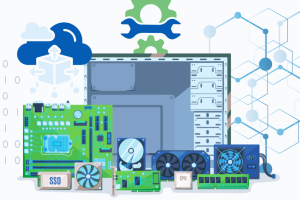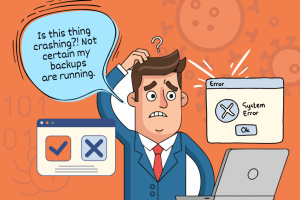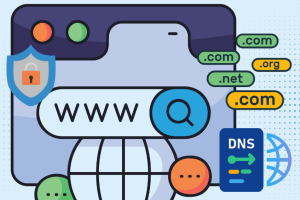Malware, short for malicious software, is a blanket term for viruses, worms, trojans and other harmful computer programs used to wreak destruction and gain access to sensitive information. Sometimes, it’s hard to tell when you’ve been hit by a computer virus. There are plenty of signs you should keep an eye out for: incredibly slow performance where once the PC zipped along, browser pop- ups when no browser is even open, ominous warnings from security programs you didn’t install, even ransom demands. Your system can be infected by malware at some point despite your best efforts. Removing malware can be tricky. The method can vary depending on the circumstances you’re dealing with.
Safe Mode
If you think your PC may have a malware infection, boot your PC into Microsoft’s Safe Mode. In this mode, only the minimum required programs and services are loaded. If any malware is set to load automatically when Windows starts, entering in this mode may prevent it from doing so. This is important because it can make removing the nefarious files easier since they’re not actually running or active. When in this mode, try scanning with an Anti-Virus Program.
To boot into Windows Safe Mode, first click the Start button, select the Power button, hold down the Shift key, and click Reboot. When the full-screen menu appears, select Troubleshooting → Advanced Options → Startup Settings. On the next window, click the Restart button, and wait for the next screen to appear. A menu with numbered startup options will appear. Select number 4, which is Safe Mode.
Anti-Virus Programs
These are widely known products in the category of malware protection. Despite having “virus” in the name, many products can also impact other forms of malware. These programs – from free software, paid antivirus , and major security suites – can keep tabs on your Windows PC with scans, real- time monitoring, and even heuristic analysis of files and processes so new threats can be identified. It’s important to keep your Anti-Virus program updated to maintain the highest level of protection. Despite this, even the best antivirus isn’t 100 percent foolproof.
Suspicious Browser Extensions
Browser extensions are pieces of code that are added to a browser. They can be run like any other software, but instead of being installed straight onto your computer, they are installed within the files for your browser application. Many extensions are useful, and offer a convenient way to customize your browser. Others are designed to be harmful, and can compromise your computer. Since your browser is already a trusted application, it’s hard for some antivirus programs to catch malicious extensions. Best course of action before installing an extension is to look it up: is the developer legitimate, clearly explains what the extension does, recommended by reputable sources, etc.
If you notice that your browser is behaving oddly – new tabs opening to suspicious websites, a new startup page you didn’t assign, websites or searches redirecting to other sites – a malicious extension could be responsible. Thankfully, many browsers allow you to check what extensions have been installed and are active: Disabling or uninstalling likely culprits can reveal if it was the cause.
If you notice that your browser is behaving oddly – new tabs opening to suspicious websites, a new startup page you didn’t assign, websites or searches redirecting to other sites – a malicious extension could be responsible. Thankfully, many browsers allow you to check what extensions have been installed and are active: Disabling or uninstalling likely culprits can reveal if it was the cause.
Windows Built-in Tools
Windows 10 provides several recovery options baked into the OS: System Restore, System Refresh/Fresh Start, System Reset, and System Reinstall. Should be noted that with any of these operations, there is some potential for data loss: make sure you back up any essential data!
- System Restore. This has been around since Windows ME. It’s a fairly easy and quick strategy to try. If your machine seems back to normal after a restore, it could mean that a recent update or program installed caused the issue. Unfortunately, this often doesn’t get rid of many kinds of malware.
- System Refresh. Starting in Windows 8, this essentially reinstalls Windows without losing your personal files. A great option for lingering malware infections that may be lodged deep within your system files. However, as it only refreshes system files, System Refresh may not remove malware if it is located elsewhere (like in personal data). Another consequence is it uninstalls all programs that are not pre-installed.
- Fresh Start. Added in the Windows 10 Creator’s Update, the Windows 10 Fresh Start tool replaced System Refresh. The difference between Fresh Start and System Reset is that when you perform a Fresh Start, Windows 10 is downloaded from Microsoft and not pulled from standard restore partitions on the device. It’s best used if you think your restore partition has been compromised or corrupted.
- System Reset A more aggressive form of Refresh, this can be more effective at removing malware since it does a much deeper clean. Keep in mind that this reinstalls the system files and deletes your personal files: unless you have comprehensive backups, data loss is very likely.
Conclusion
The best antidote to malware is always prevention. Here are a couple of tips you can use to prevent a malware infection in the future:
- Do not click on unfamiliar links, emails, or popups.
- Do not download files from untrusted sources.
- If you get a confusing message from a friend or relative on social media, do not interact with it. Instead, reach out to the friend directly. Their account may have been compromised.
- Use strong passwords on your online accounts, and try not to reuse passwords.
With this knowledge, you’ll be able to prevent malware before it has a chance to inflict damage on your system.




